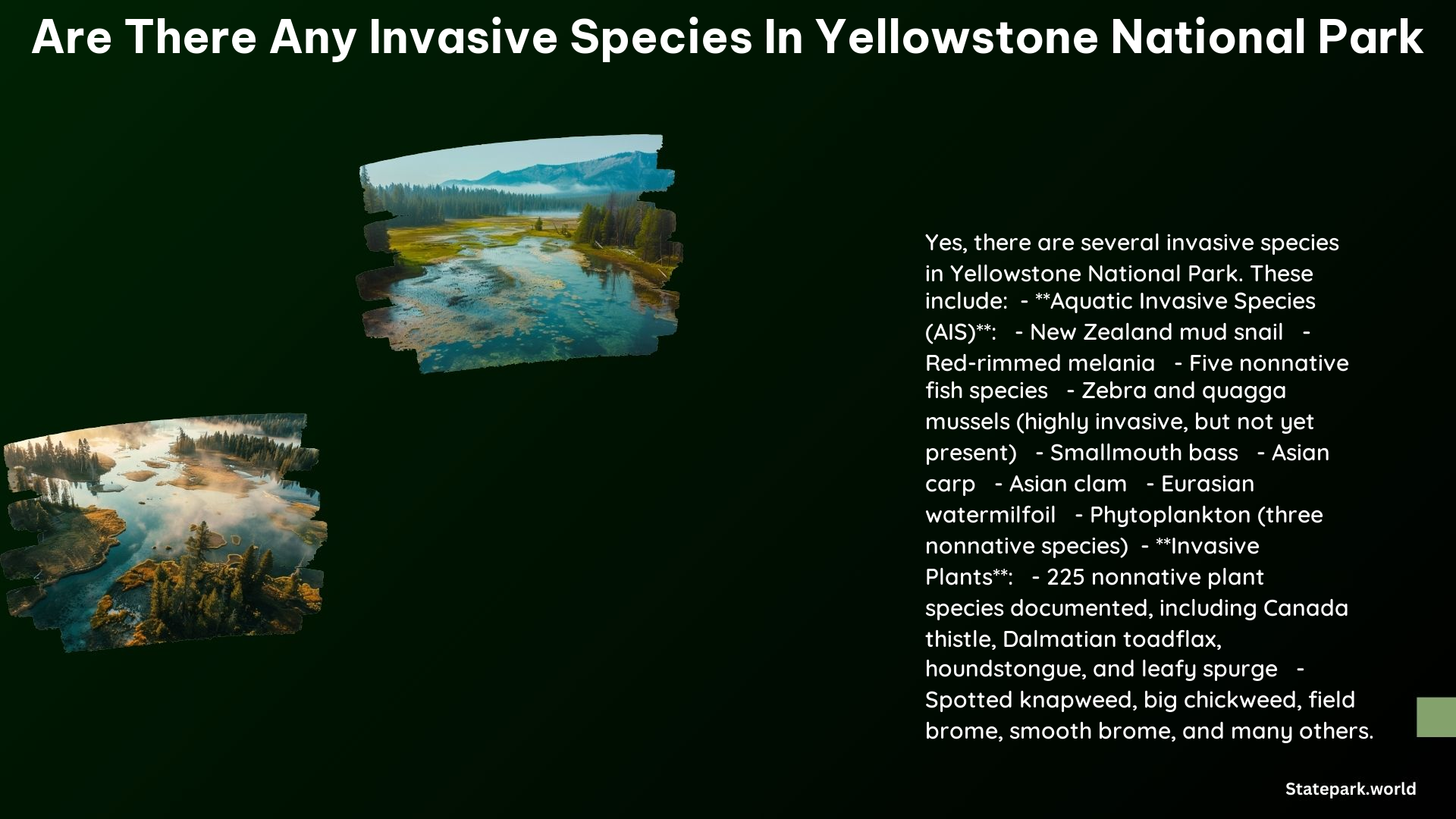Yes, there are several invasive species present in Yellowstone National Park. These species can be categorized into aquatic invasive species (AIS) and invasive plants, and they pose a significant threat to the park’s delicate ecosystems.
Aquatic Invasive Species (AIS)
- New Zealand Mud Snail: First detected in 1994, this snail is now found in all major watersheds, affecting native invertebrates and the aquatic ecosystem.
- Red-rimmed Melania: Another invasive snail species present in the park’s waters.
- Whirling Disease: A microscopic parasite affecting cutthroat trout, first detected in 1998.
- Zebra and Quagga Mussels: Highly invasive species that pose a significant threat to the park’s waters, with recent detections in nearby waterways.
Invasive Plants

- Spotted Knapweed: A well-established invasive plant that can outcompete native species and alter ecosystems.
- Canada Thistle: A nonnative plant that can displace native species and change vegetation communities.
- Dalmatian Toadflax: Another invasive plant that can alter ecosystems and affect wildlife.
- Houndstongue: A nonnative plant that can displace native species and change vegetation communities.
Prevention and Management Efforts
Yellowstone National Park has implemented several measures to prevent the introduction and spread of invasive species:
- Boat Inspections: The park conducts inspections to prevent the introduction of invasive species through watercraft.
- 30-Day Dry Time: A mandatory dry period for sailboats and some motorized boats before entering park waters to prevent the spread of invasive species.
- Prohibition of Fouled Watercraft: Watercraft previously fouled by mussels are prohibited from entering park waters, regardless of dry time.
- Clean, Drain, Dry: Boaters and anglers are reminded to clean, drain, and dry all boats, trailers, and equipment to minimize the risk of introducing invasive species.
- Integrated Pest Management: The park uses a combination of chemical, biological, sociological, and mechanical methods to control invasive plants.
These efforts are crucial in protecting the delicate ecosystems of Yellowstone National Park from the damaging effects of invasive species.
References
- Invasive Plant Atlas. (n.d.). Yellowstone National Park (Wyoming) – Invasive Plant Atlas. Retrieved from https://www.invasiveplantatlas.org/park.html?id=YELL
- National Park Service. (2024). Aquatic Invasive Species Ecology – Yellowstone National Park (U.S. National Park Service). Retrieved from https://www.nps.gov/yell/learn/nature/ais.htm
- Public Lands. (n.d.). Invasive Species at US National Parks – Public Lands. Retrieved from https://www.publiclands.com/blog/a/invasive-species-at-us-national-parks
- National Park Service. (2020). Invasive Plants – Yellowstone National Park. Retrieved from https://www.nps.gov/yell/learn/nature/invasive-plants.htm
- NBC Montana. (2024). Yellowstone National Park to implement measures to stop spread of invasive species. Retrieved from https://www.nbcmontana.com/newsletter-daily/yellowstone-national-park-to-implement-measures-to-stop-spread-of-invasive-species
